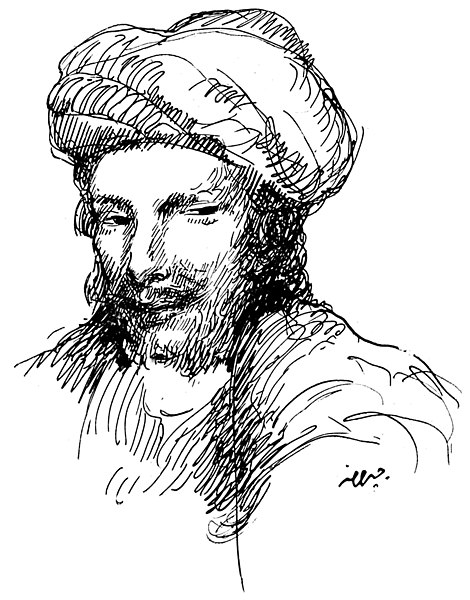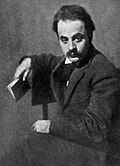Abruozdielis:Abu Nuwas.jpg

Parvaizos dėdloms: 470 × 600 pikselē. Kėtū dėdlomu: 188 × 240 pikselē | 376 × 480 pikselē | 833 × 1 063 pikselē.
Pradėnis abruozdielis ((833 × 1 063 taškū, faila dėdoms: 323 KiB, MIME tips: image/jpeg))
Abruozdielė istuorėjė
Paspauskėt ont deinas/čiesa, ka paveizietomėt abruozdieli, kāp ons ėšruodė pradiuo.
| Dėina/Čiesos | Pamažėnėms | Mierā | Nauduotuos | Paāškėnėms | |
|---|---|---|---|---|---|
| vielībs | 23:17, 7 rogpjūtė 2019 |  | 833 × 1 063 (323 KiB) | FunkMonk | Bigger. |
| 14:14, 2 rogpjūtė 2008 |  | 242 × 305 (36 KiB) | FunkMonk | {{Information |Description=Abu Nuwas, Drawing by Kahlil Gibran al-Funun 2, no. 1 (June 1916) |Source=http://www.al-funun.org/al-funun/images/index.html |Date=June 1916 |Author=Kahlil Gibran |Permission= |other_versions= }} {{ImageUpload|basic}} |
Abruozdieliu nauduojėms
Ons poslapis ruod ton abruozdielin:
Abruozdielė nauduojėms vėsor
Tėi viki poslapē nauduo šėton abruozdieli:
- Skvarmas nauduojėms af.wikipedia.org
- Skvarmas nauduojėms als.wikipedia.org
- Skvarmas nauduojėms alt.wikipedia.org
- Skvarmas nauduojėms an.wikipedia.org
- Skvarmas nauduojėms ar.wikipedia.org
- Skvarmas nauduojėms ar.wikiquote.org
- Skvarmas nauduojėms ar.wikisource.org
- Skvarmas nauduojėms arz.wikipedia.org
- Skvarmas nauduojėms ast.wikipedia.org
- Skvarmas nauduojėms av.wikipedia.org
- Skvarmas nauduojėms azb.wikipedia.org
- Skvarmas nauduojėms az.wikipedia.org
- Skvarmas nauduojėms ba.wikipedia.org
- Skvarmas nauduojėms be-tarask.wikipedia.org
- Skvarmas nauduojėms be.wikipedia.org
- Skvarmas nauduojėms bg.wikipedia.org
- Skvarmas nauduojėms bi.wikipedia.org
- Skvarmas nauduojėms bjn.wikipedia.org
- Skvarmas nauduojėms bn.wikipedia.org
- Skvarmas nauduojėms br.wikipedia.org
- Skvarmas nauduojėms bs.wikipedia.org
- Skvarmas nauduojėms bxr.wikipedia.org
- Skvarmas nauduojėms ca.wikipedia.org
- Skvarmas nauduojėms ce.wikipedia.org
- Skvarmas nauduojėms ckb.wikipedia.org
- Skvarmas nauduojėms co.wikipedia.org
- Skvarmas nauduojėms cs.wikipedia.org
- Skvarmas nauduojėms cy.wikipedia.org
- Skvarmas nauduojėms da.wikipedia.org
- Skvarmas nauduojėms de.wikipedia.org
- Skvarmas nauduojėms el.wikipedia.org
- Skvarmas nauduojėms en.wikipedia.org
Veizietė, kāp vėsor tasā abruozdielis nauduojams īr.
